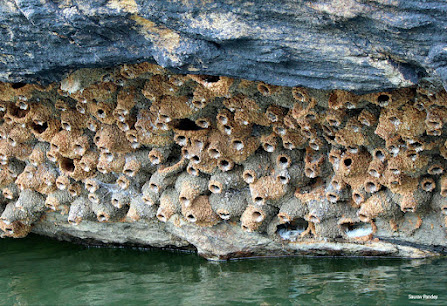back to basıcs
Generative architects focus on self-organizing and emergent architecture as their design. In architecture, three terms -complex systems, self-organization, and emergence- stand out. Computer scientist Melanie Mitchell defines a nonlinear complex system as "large networks of components with no central control and simple rules of operation give rise to complex, collective behavior, sophisticated information processing, and adaptation via learning or evolution." When we ask what self-organization is, biologist and physician Scott Camazine states, "The rules specifying interactions among the system's components are executed using only local information, without reference to the global pattern." Furthermore, self-organization is closely related to the concept of emergence, which is generally understood to mean that "The whole is more than the sum of its parts." According to Camazine, "Emergent properties are system features that arise unexpectedly from interactions among the system's components. An emergent property cannot be understood simply by examining in isolation the properties of a system's components, but requires a consideration of the interactions among the system's components." For example, bees and termites that "produce complex built artifacts... without central planning or instructions."
These descriptions can be considered together with non/human scholars' studies on the queer potential of the non/human. Line Henriksen and Marietta Radomska state that non/human workings disturb neatly set boundaries, hierarchies, and categories and draw surprising connections. The non/human is enmeshed in a multiplicity of relationalities that cannot be captured and are limited to the straitjacket of binary oppositions. These are parallel with what emergent architecture studies suggest regarding connections and relationalities. Non/human scholars also suggest that queering the non/human simultaneously queers the human, so I argue that queering the architecture with non/human potential also queers my artwork.
I will use these ways of thinking to create and imagine architecture for my work. My starting questions that lead to this topic are about a city's characteristics concerning architecture. The queer potential of self-organizing and emergent architecture might help me add the non/human perspective to my questions. However, taking a few steps back, I can state that the starting point of my research and the questions I have asked up until today is to examine queer art in the simplest terms. I can return to fundamental questions such as what is queer art? What is queer art history? Does it have a specific methodology/aesthetic? Does it have specific subject matters? How should we evaluate queer art? Is every queer artist's work essentially queer art? How to think about creativity within queer art? So far, and with my work, I have been trying to address these questions. My priority will be to seek these questions and answers in current studies. I have already read some from Queer Art: A Freak Theory by Renate Lorens and The Queer Art of Failure by Judith Halberstam.


Yorumlar
Yorum Gönder